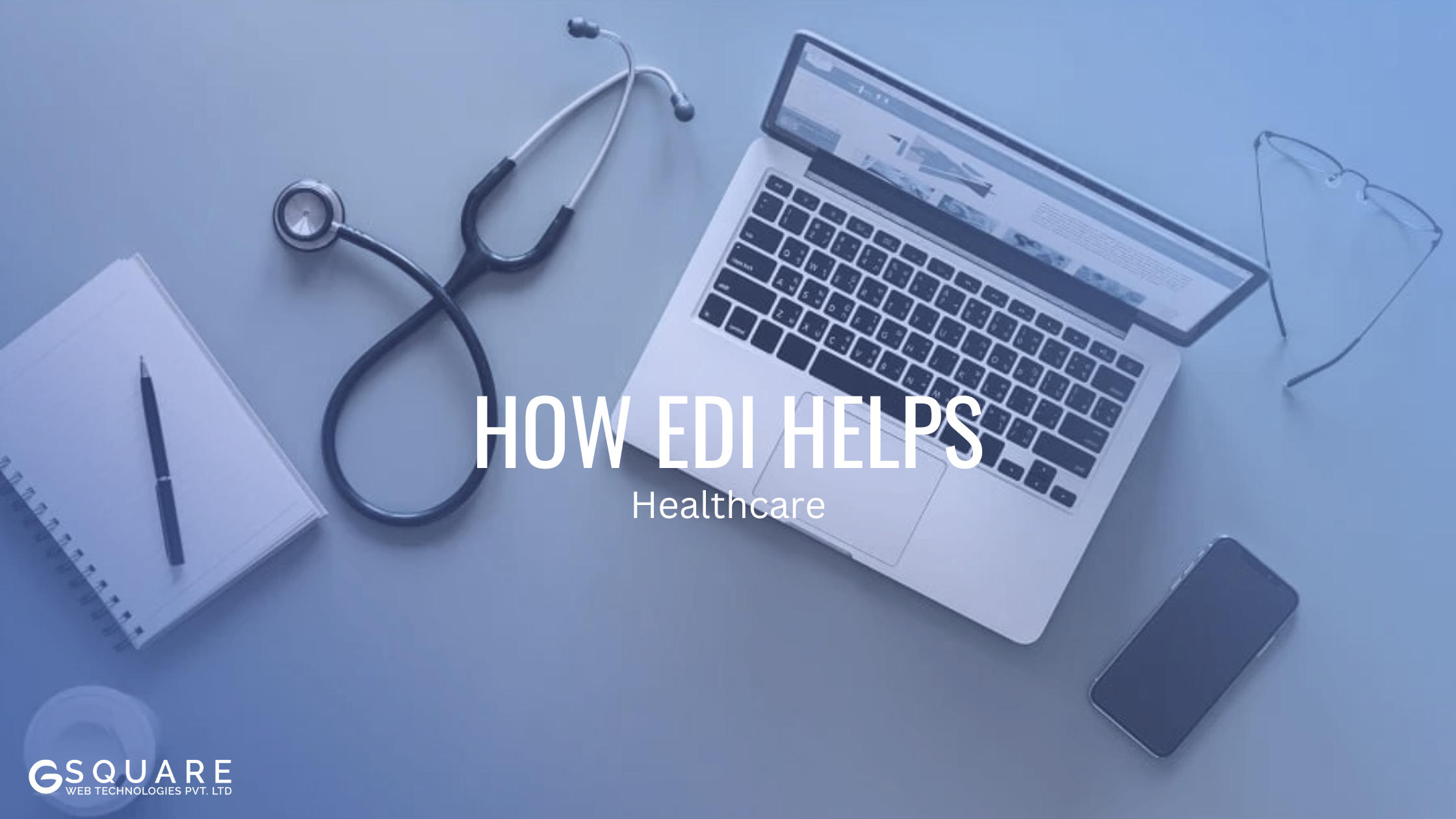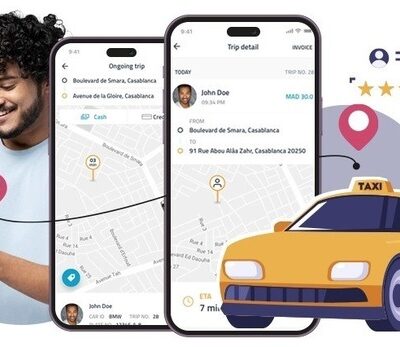
Understanding How EDI Helps Healthcare and Why Businesses Should Care
In healthcare, dealing with lots of different data is hard. The information is spread out in different places, in different ways, and it’s often hard for the important people to get to it. This makes it tough to talk to each other and make decisions. It also raises the chances of mistakes and slows down how quickly patients can get care, which isn’t good for them or for making the hospital run smoothly.
But now, Electronic Data Interchange (EDI) is changing things. EDI in healthcare makes data easier to understand and share by making sure everyone uses the same formats and rules.
EDI also makes it easier for different systems to work together by giving them a single way to send important stuff like patient records and bills electronically.
According to a report by Markets and Markets, the global healthcare EDI market made around $3.0 billion in 2020, and it’s expected to grow to $4.4 billion by 2025, with a steady increase of 7.8% each year.
In this article, we’ll talk about how Electronic Data Interchange (EDI) is really important in healthcare. We’ll explain how it works and why it’s so good. We’ll also talk about how it helps hospitals and other healthcare places work better together. We’ll cover how it makes communication easier, helps things run smoother, and makes sure everything is done accurately. Basically, we’ll show you why EDI is such a big deal in making healthcare work better.
The Importance of EDI in Healthcare
Electronic Data Interchange (EDI) plays a crucial role in making healthcare operations run smoothly.
Using EDI reduces mistakes and makes tasks easier by turning important information like patient records, insurance claims, and orders into digital formats that everyone can understand. It helps different systems work together better, which means healthcare providers can collaborate more effectively.
EDI transactions also help businesses in healthcare manage their tasks efficiently, from handling money matters faster to making sure they have the right supplies and follow all the rules.
Healthcare providers can negotiate better deals with insurance companies and keep track of their agreements more easily with EDI. This means they can get paid properly and make more money.
By making operations more efficient and cutting down on paperwork, EDI helps healthcare organizations save money. This lets them spend their resources better and focus more on giving patients the best care possible.
EDI and HIPAA (Health Insurance Portability and Accountability Act) go hand in hand in healthcare. HIPAA says that healthcare businesses have to use standardized EDI formats for electronic tasks. But understanding these standards can be tricky, so sometimes healthcare professionals hire experts to help them.
These experts make sure everything follows HIPAA rules and that EDI processes run smoothly. This keeps patient information safe and helps operations work better.
Benefits of EDI in Healthcare
Electronic Data Interchange (EDI) brings many advantages to the healthcare industry, making communication between healthcare providers, insurers, patients, and others easier and safer. Let’s take a closer look!
- Improved Efficiency: EDI automates tasks like claims processing and billing, cutting down on paperwork and mistakes. This makes processes faster and more efficient.
- Cost Reduction: Using EDI saves money by reducing manual work, paper use, and postage. It also speeds up payments, helping organizations manage their finances better.
- Enhanced Accuracy: With EDI, errors from manual tasks, like typos, are minimized. This means fewer mistakes in data and fewer delays in payments.
- Faster Transaction Processing: EDI allows information to be exchanged almost instantly, speeding up tasks like submitting claims and checking eligibility. This means quicker payments and smoother operations.
- Compliance and Security: EDI systems follow industry rules and keep data safe with encryption. This helps organizations meet regulations like HIPAA and protects patient information from unauthorized access.
- Improved Patient Care: EDI frees up time for healthcare providers to focus on patients by making administrative tasks easier. Faster payments also mean better care, as organizations can afford to maintain quality services.
- Enhanced Communication: EDI systems help different parts of the healthcare system, like providers and pharmacies, share information easily. This leads to better-coordinated care and happier patients.
- Scalability and Flexibility: EDI systems can grow and adapt as healthcare organizations change, handling more tasks and adjusting to new rules or needs.
- Audit Trails and Reporting: EDI keeps detailed records of transactions, helping organizations track performance and comply with rules. This data is useful for improving processes and reporting.
- Environmental Sustainability: By reducing paper use, EDI helps the environment by saving trees and cutting down on carbon emissions from transportation. It’s a greener way to handle documentation and data exchange in healthcare.
Use Cases of EDI in Healthcare
Electronic Data Interchange (EDI) is very important for making things easier and more efficient in healthcare. Let’s look at some ways we use EDI in healthcare:
- Claims Processing: Instead of using lots of paper, EDI helps send and process healthcare claims quickly and accurately between healthcare providers, insurers, and others. This saves time and reduces mistakes.
- Revenue Cycle Management: Healthcare organizations use EDI to automate tasks like checking if patients are eligible for treatment, sending claims, and getting paid. This makes it faster to collect money and manage finances.
- Appointment Scheduling: With EDI, healthcare providers can easily share appointment schedules with patients and other doctors. This makes scheduling appointments smoother and reduces paperwork.
- Electronic Health Records (EHR) Integration: EDI helps share patient information like medical history and test results between different healthcare systems. This makes sure everyone involved in a patient’s care has the right information.
- Pharmacy Benefits Management (PBM): Pharmacies and healthcare providers use EDI to process prescription orders, check if patients can get certain drugs, and handle payments. This makes getting prescriptions easier and reduces mistakes.
- Supply Chain Management: Hospitals use EDI to manage their inventory of medical supplies and drugs more efficiently. This helps them save money and make sure they always have what they need.
- Patient Billing and Statements: EDI lets healthcare providers send bills and reminders to patients electronically. This makes billing more accurate and faster.
- Regulatory Compliance Reporting: EDI helps healthcare organizations send reports required by laws and regulations electronically. This makes reporting easier and reduces paperwork.
- Healthcare Analytics: EDI helps exchange data that can be used to understand things like patient outcomes and how healthcare services are used. This helps healthcare organizations improve their services.
- Referral Management: EDI makes it easier to share information between different healthcare providers when patients need to see specialists. This helps coordinate care and reduce delays in getting treatment.
Types of Healthcare EDI Transactions
In simple terms, healthcare EDI transactions are like electronic messages that different parts of the healthcare system send to each other. These messages follow specific rules and formats to make sure they can be understood by everyone involved. Here are some common types of these transactions:
- Healthcare Claim Transactions (837): These are used to send healthcare bills from healthcare providers to insurance companies. They include information about the patient, what treatments they received, and how much they need to be paid.
- Healthcare Claim Payment/Advice Transactions (835): These are used by insurance companies to send payment information to healthcare providers. They include details about how much was paid, any adjustments, and reasons for denial.
- Healthcare Eligibility/Benefit Inquiry and Response Transactions (270/271): These are used by healthcare providers to check if a patient has insurance coverage. The response gives details about what the insurance covers.
- Healthcare Enrollment and Disenrollment Transactions (834): These are used to sign people up for healthcare plans or remove them from the plans. It helps keep track of who is covered by insurance.
- Healthcare Claim Status Request and Response Transactions (276/277): These are used to check on the status of a healthcare claim. The response tells whether the claim has been processed, paid, denied, or is still being worked on.
- Healthcare Referral Certification and Authorization Transactions (278): These are used to get approval for certain healthcare services, like seeing a specialist or getting a specific test done. It helps make sure these services are necessary and covered by insurance.
- Pharmacy Transactions (NCPDP): These are used for things related to prescriptions, like sending claims to insurance, checking medication history, and making sure patients are eligible for certain medications.
How to Make Your Healthcare System EDI Compliant?
Let’s look at how to make sure your healthcare system follows the rules for electronic data exchange (EDI) and sticks to industry standards:
- Checking Your System and Processes: First, you need to see how your healthcare system works currently. This means looking at the technology you use and how you do things. By doing this, you can find out where you might need to make changes to follow EDI rules.
- Using Software that Works with EDI: You’ll need software that can handle EDI. This software should be able to understand and use the special formats and rules for EDI. It’s important to pick software that fits with what you already have and can talk to other systems easily.
- Training Your Staff: It’s crucial to teach your staff about how to use EDI. They need to know things like how to keep data safe, how to send information correctly, and what the rules are. By training them well, you make sure everyone can use EDI properly.
- Keeping an Eye on Compliance: You need to keep checking to make sure you’re still following the EDI rules. Regular checks and audits help you find any problems early on. By keeping an eye on things, you can fix issues quickly and make sure you keep following the rules in the long run.
Transforming Healthcare with Gsquare: Creating Advanced EDI Software Solutions
Gsquare is really good at making special software for healthcare companies. We pay close attention to all the rules and standards that healthcare businesses have to follow. We carefully figure out what rules and methods will work best for each project, so everything goes smoothly.
Our team knows how to make software that works well with the systems healthcare companies already use. This helps them share information safely and quickly. With our help, healthcare companies can do their work better and take better care of patients using our special software.
If you want top-notch mobile app development, get in touch with our experts.





